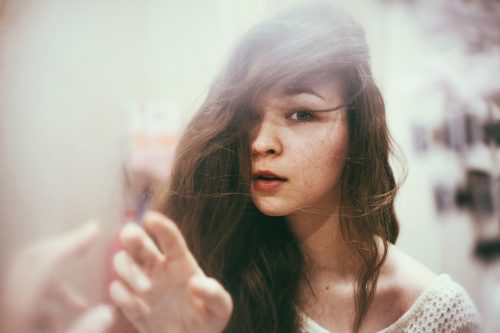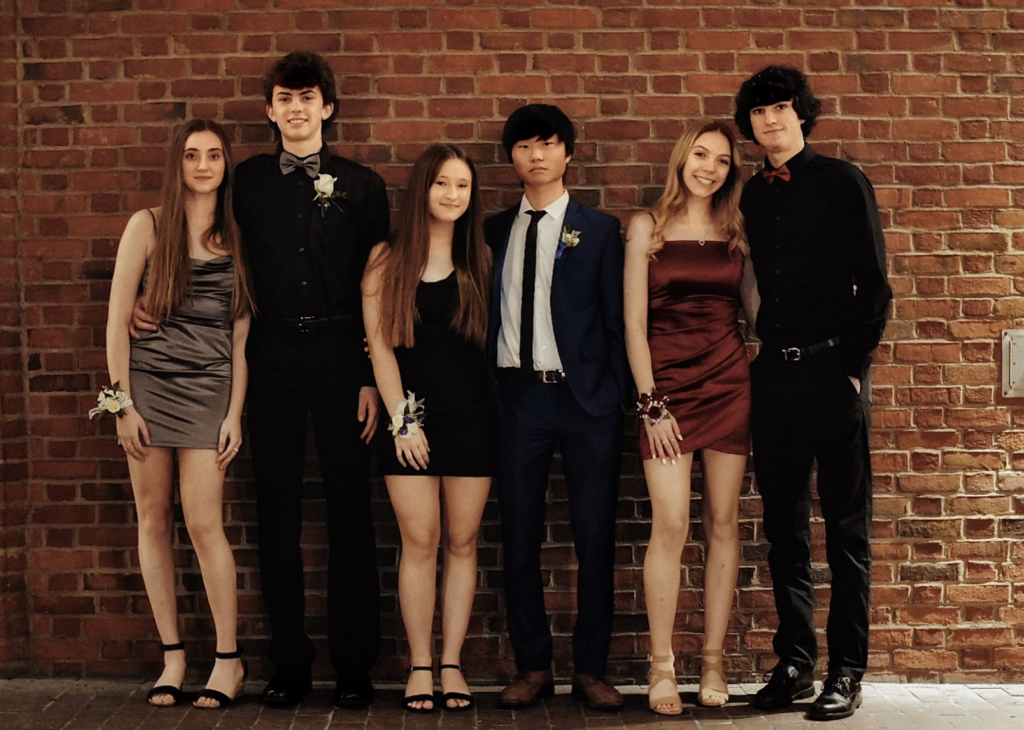I've lived in a variety of small apartments and rooms throughout my life. Though they often served as artistic obstacles, they provided me with an appreciation for details. Thanks to them, I was able to find potential in everyday objects such as intricate shadows cast by lace curtains, hands, and even steam. Limitations strengthened my patience, compelled me to try out new things, and showed me the incredible use of mirrors.
In addition to finding beauty in seemingly insignificant items, I discovered the sheer amount of space that mirrors of all shapes and sizes created. In one of my old apartments, a tremendous wardrobe disguised as a mirror took up most of the corridor. Despite its size, it added more space to the entire apartment, filling it with an illusion of physical freedom. Its ability to make a very small corridor appear more spacious was something I took for granted for a long time. Fortunately, this ignorance found its way out of my life.
During a busy indoor shoot one evening, the way I viewed mirrors drastically shifted. Yearning for extra room and more ideas, I randomly placed my camera and tripod in front of the mirror, which led to the realization that mirror photos could be taken in ways that fit my personal style. This experience highlighted the importance of paying attention to every single thing, no matter how “normal” it seemed. Because of precious details like this, I'm encouraged to reassess the things I take for granted on a daily basis.

After this discovery, I began to find a lot of pleasure in taking photos indoors. (As someone who takes self-portraits with a 50mm 1.8 lens, I need as much space as possible.) Mirrors of all types both satisfied and challenged me. Large mirrors gave me the opportunity to fit everything into one composition, and smaller mirrors became my creativity-enhancing tools. As a result, my inspiration flourished, pushing me to try out new challenges and confront the fears I so often succumbed to.
You might (understandably) associate mirrors with casual selfies. Don't let that stop you from using these valuable objects in your creative work, especially if you often have to take photos in cluttered rooms. It's possible to not even give away the fact that you used a mirror to take certain photos. Here are a few tips on how you can make your indoor portraits look like they were taken in a spacious room.
How to Make the Most of Distortions
It's important to consider mirror distortion before you start experimenting with reflections. The closer you and your subject get to the reflective surface, the softer the results will be. This will inevitably work to your advantage if you like to take dreamy-looking photographs. If sharper results are what you aim for, keep this obstacle in mind. Regardless of your interests, do try taking slightly distorted closeups. Experimenting might lead you to the most wonderful ideas. 🙂

Think About This for Better Compositions With Large Mirrors
Expansion is something a lot of photographers swear by. Merging photos in editing programs is not only fun, but limitless. Even small spaces can support this editing technique. An alternative to this is the use of large mirrors. The aforementioned one I used before provided me with the ideal amount of creative room. While this isn't exactly expansion, it's a quick and easy way to add more space to your compositions in general. (Imagine, then, what you could do if you combined expansion and large mirrors!)
To hide your camera, don't place it directly in front of the mirror. This might sound like common sense, but it's a handy tip to remember when you're busy focusing on other parts of your shoot. I often place mine a short distance away from the mirror, usually close to its edge, and check if any part of it is visible in the shot. This gives me lots of space and angles to work with. If you want to go a step further, conceal a part of your lens to create a blurred foreground. It doesn't have to look perfect – the more items you experiment with, the closer you'll get to finding the perfect tool that will enhance your portraits.

The Diversity of Small Mirrors
Small mirrors are a personal favourite of mine. When I'm completely out of ideas or in a simple-looking location, they give me a mirrored world to borrow ideas from. The stranger the mirror and its frame, the better. Focusing on your subject using this method might be challenging due to the size of the mirror itself. However, I find this limitation insignificant compared to the interesting results that emerge from it. For instance, a small mirror usually has a frame, which could literally frame your subject's face or focus on a specific detail that a simple portrait would be oblivious to. In addition to directing your viewers' eyes to a desired spot, small mirrors will give you a level of creativity that simply stands out. Most importantly, they'll give your camera more space to work with.
Here are a few relatively small mirrors you could work with:
-
- Ceiling mirrors
- Hand mirrors
- Reflective objects such as kitchen utensils

An Extra Note: Perfecting Photos With DIY Textures
Textures can be incredibly fun to work with. If, like me, you enjoy experimenting with unusual techniques and distortions, you'll really enjoy DIY textures. A few interesting textures you could work with are water (even colored water!), paint, or any kind of liquid you see potential in.
Whether your main shooting locations are indoors or outdoors, a mirror will help you enhance your idea at one point or another. The beauty of mirrors is that there's an endless supply of them in the world, from vintage artifacts to modern gems. The more you use them, the more creative techniques you'll discover, techniques that will fit your personal vision and help you become an even more innovative photographer.
And of course, don't forget to have fun. 🙂






2 Comments
Thanks for this short article. The picture by Sam Buriss caught my eye as it had such a great graphic quality. I have by chance used mirrors previously in my photos because I do know about their expansion effect from my interior design background. You magnified the concept in my mind however so it has encouraged me to experiment more. I’m always looking for compositional tricks to pull my creativity juices out and this certainly fits the bill!
Hi Richard! I’m very pleased to know that my article helped you, even in a small way. I hope you continue to find inspiration and creative potential everywhere you go. Best of luck to you! 🙂